Ecuador: Galapagos (Teil 2: Kreuzfahrt Tag 1-4)
Foilsithe: 11.08.2018
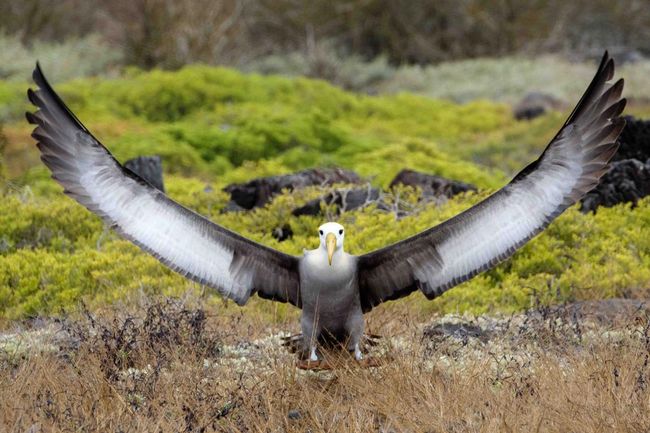
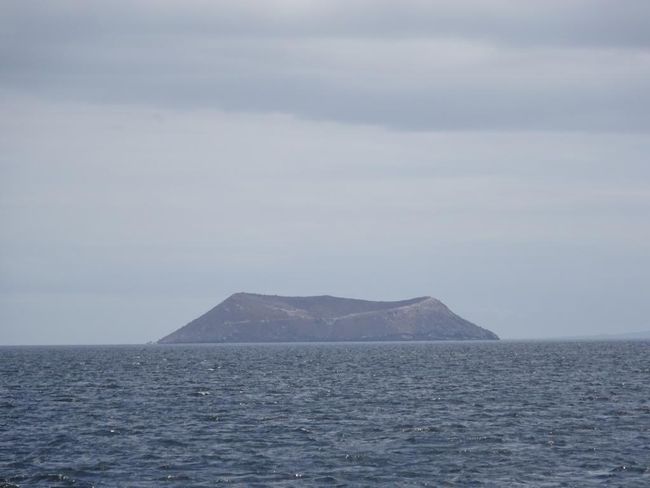
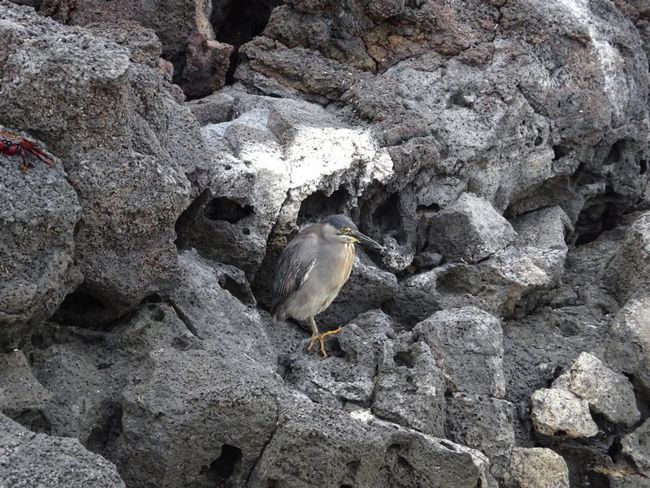
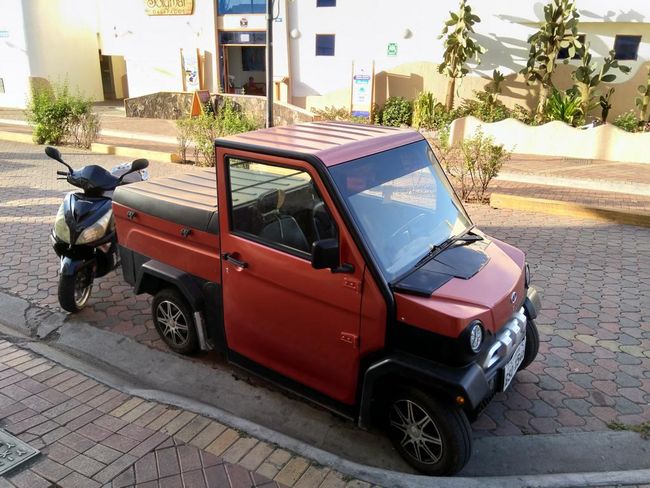
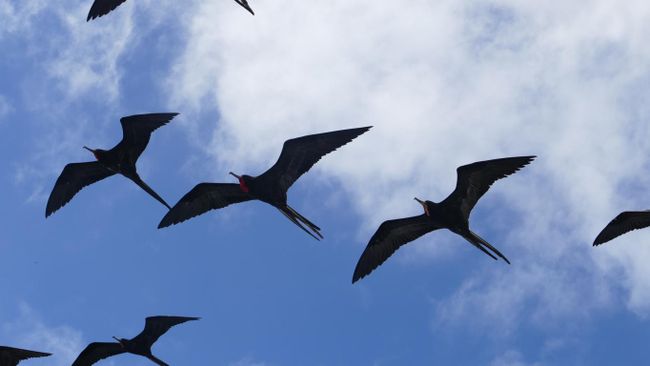
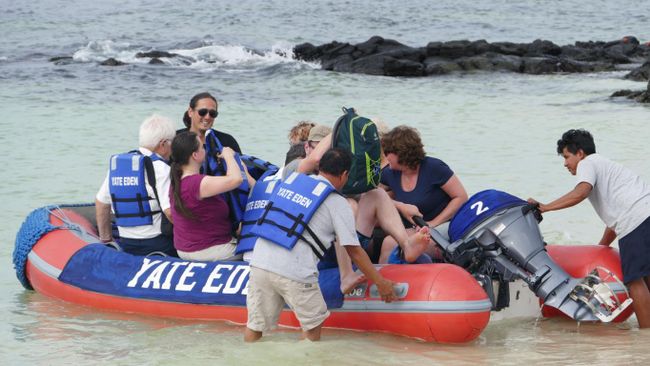
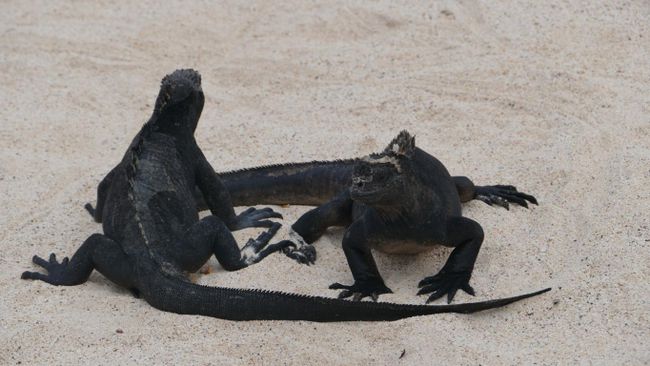
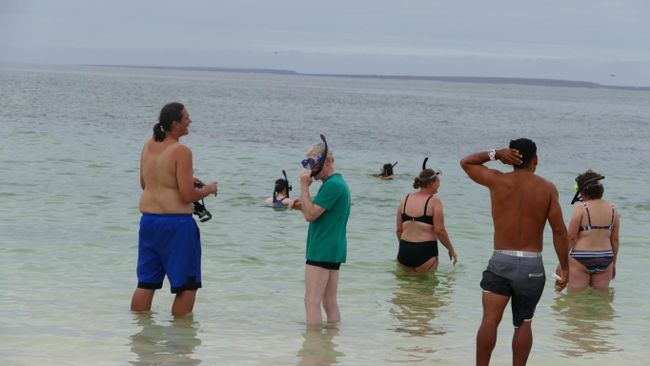
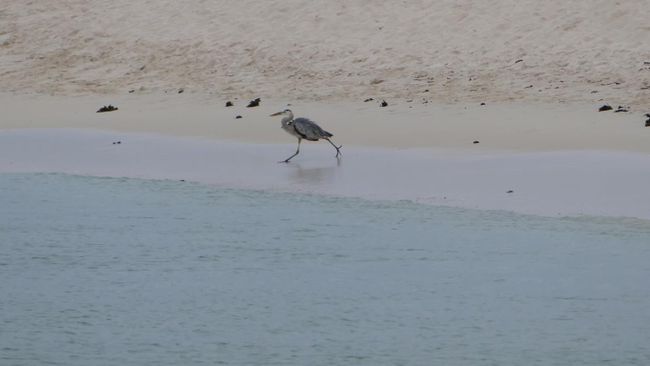
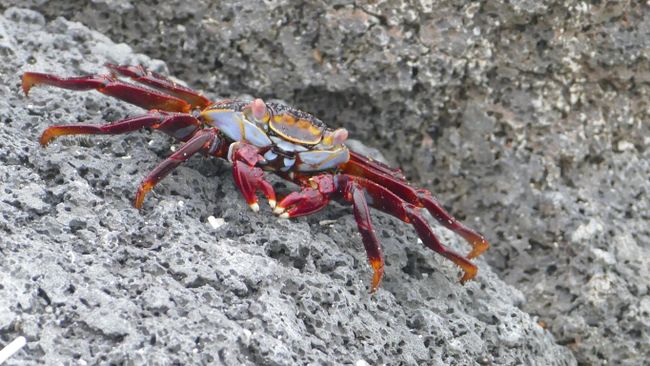
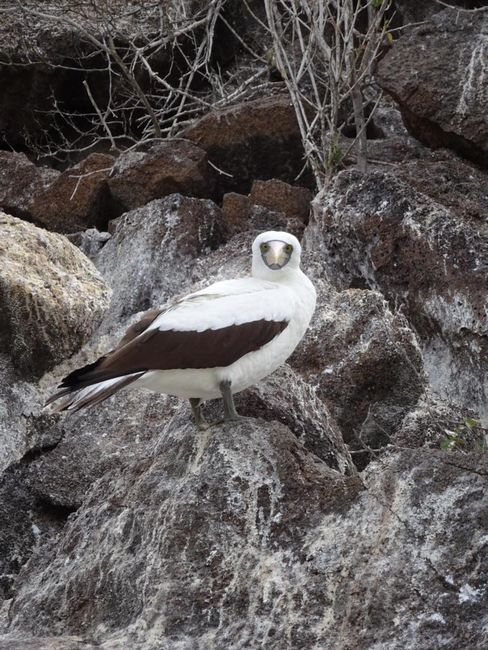
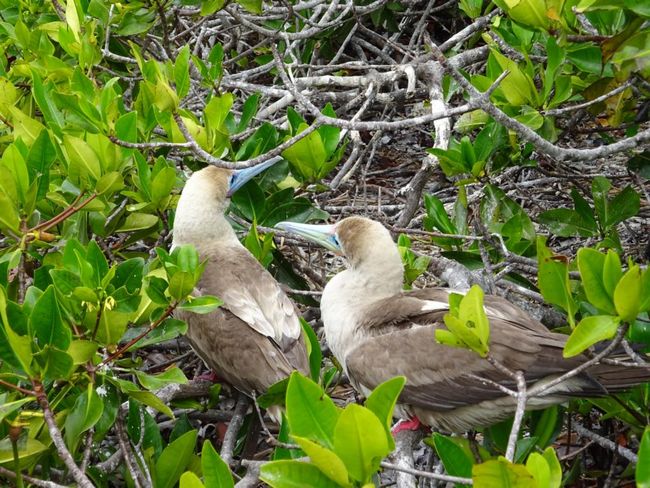
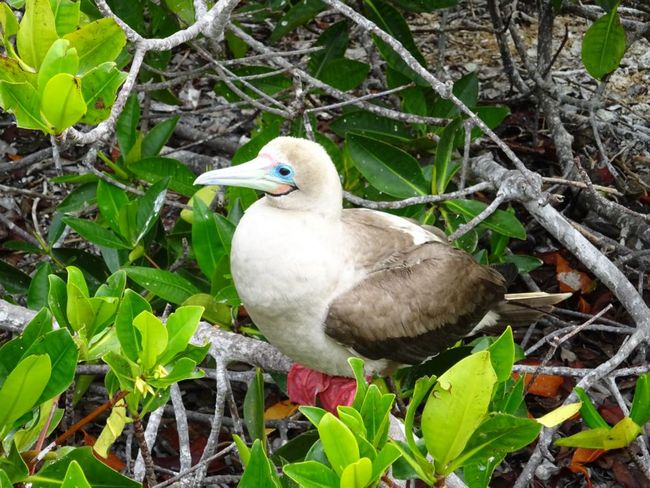
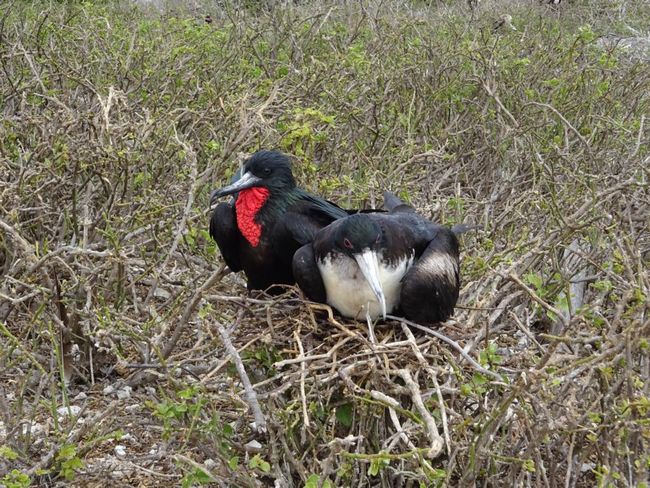
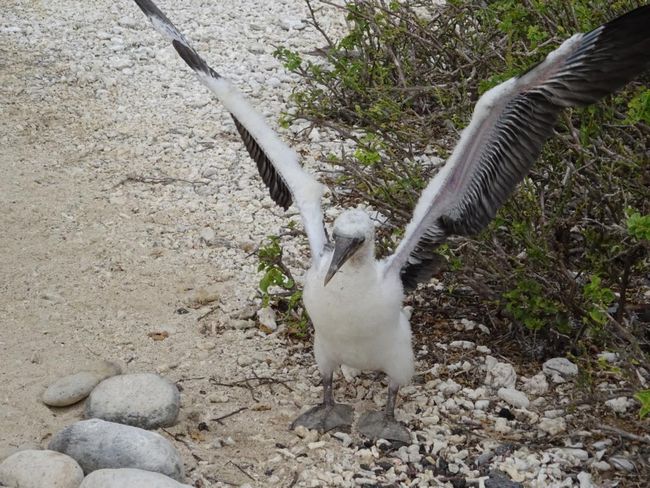
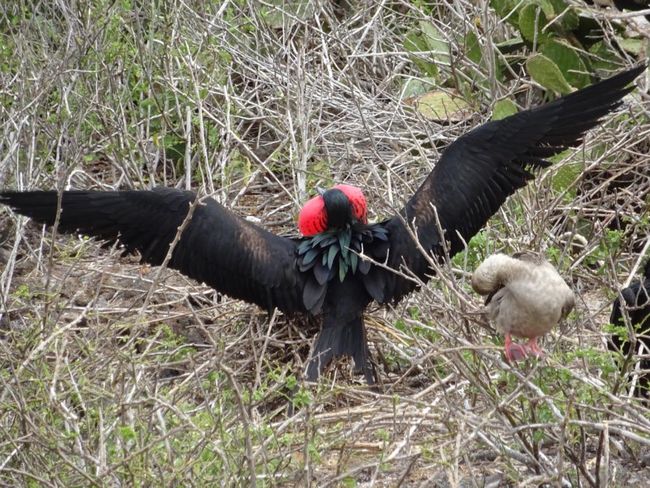
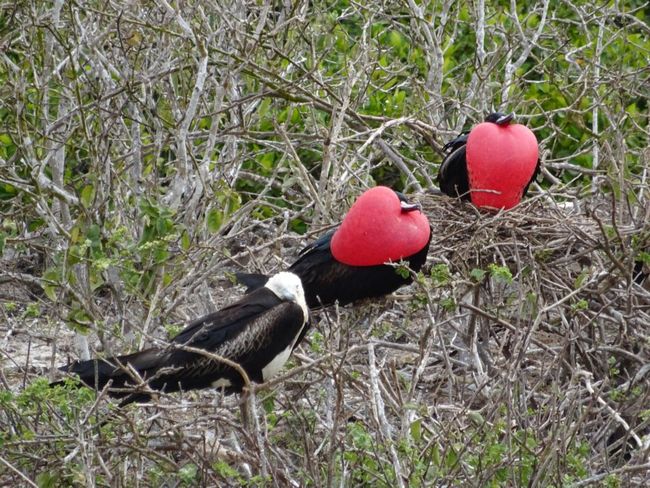
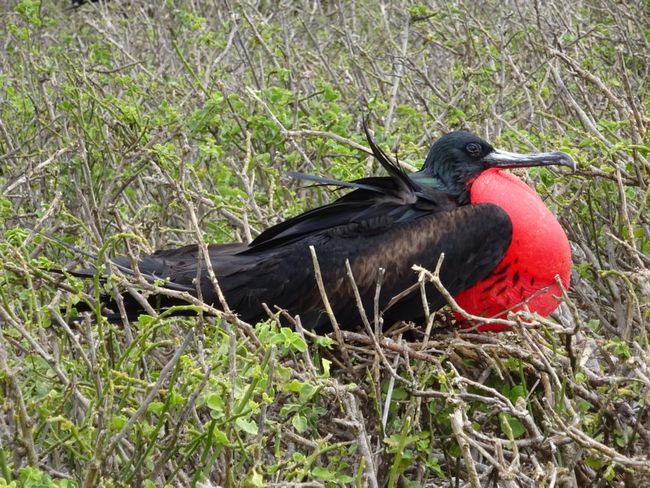
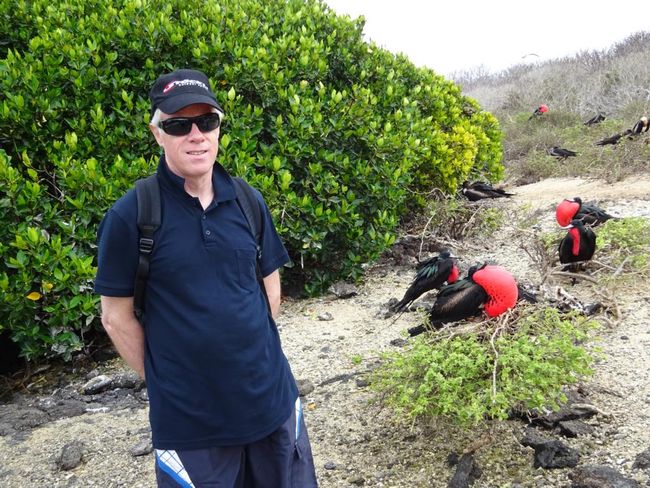
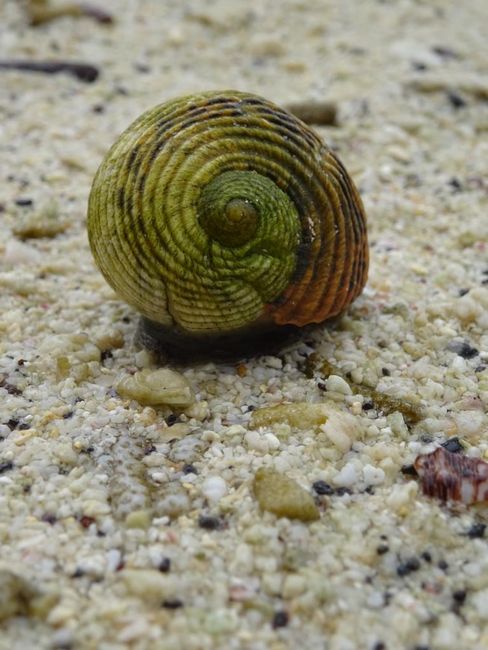
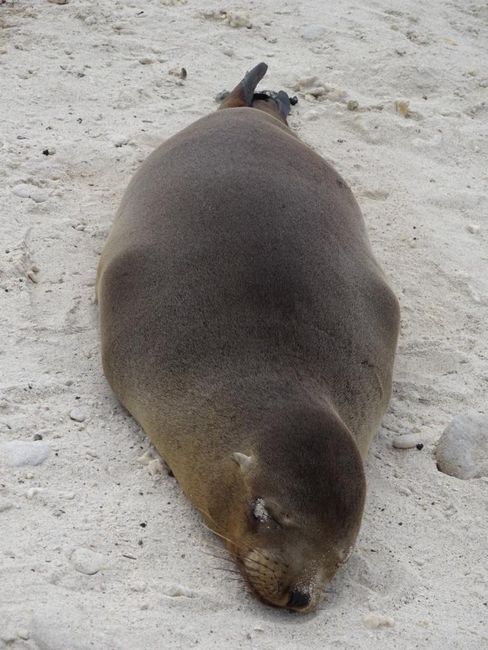
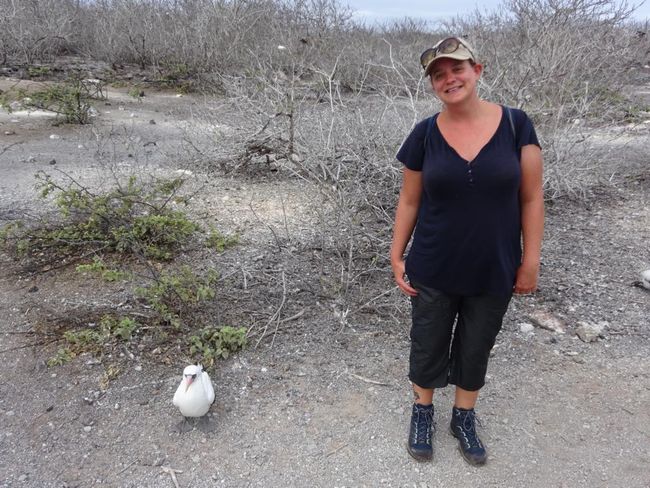
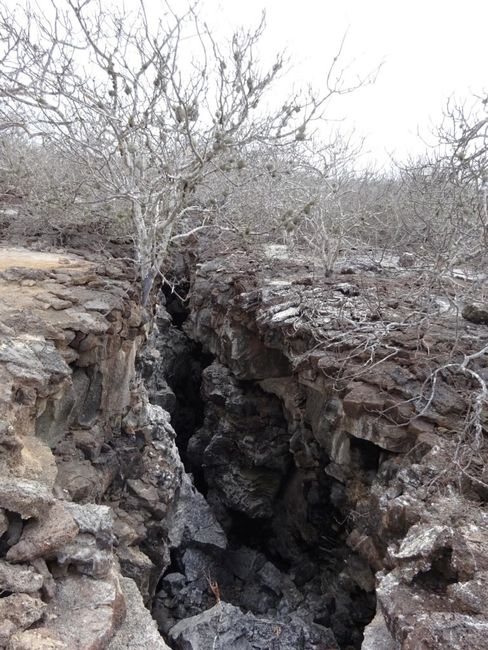
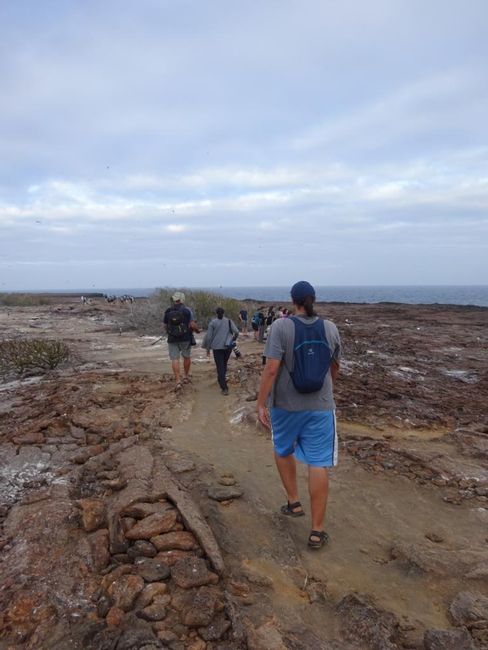
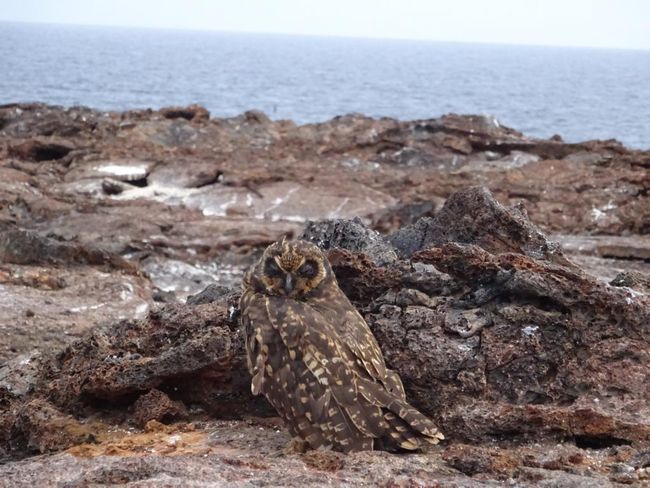
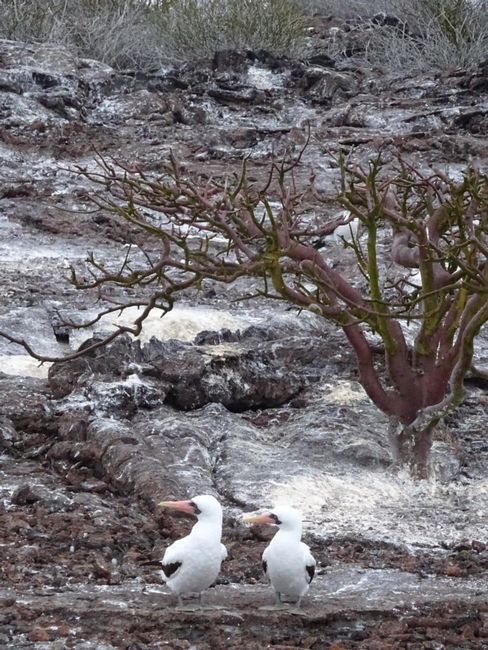
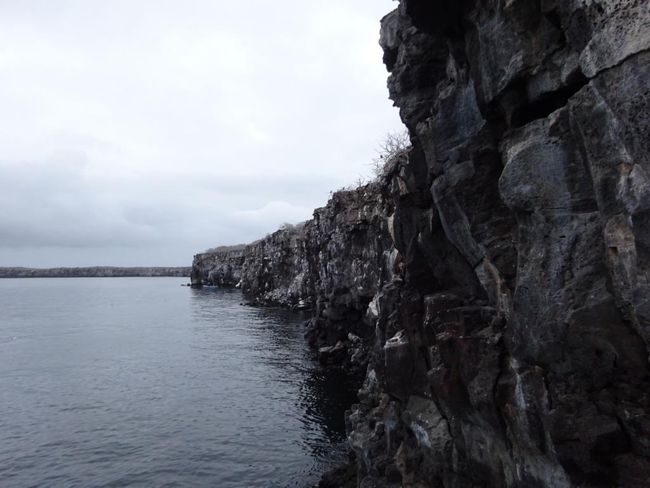
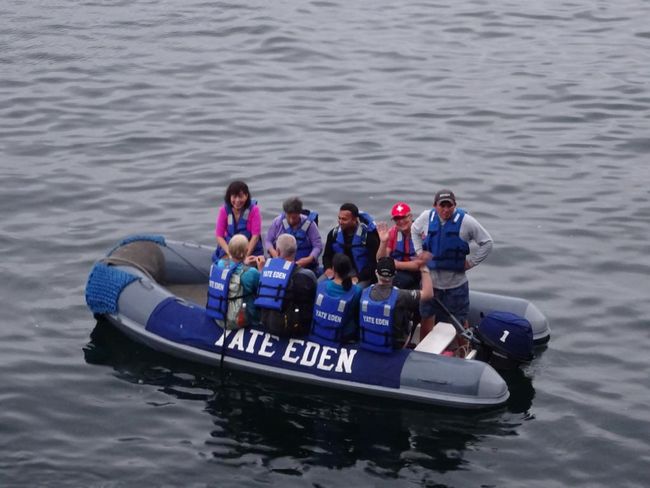
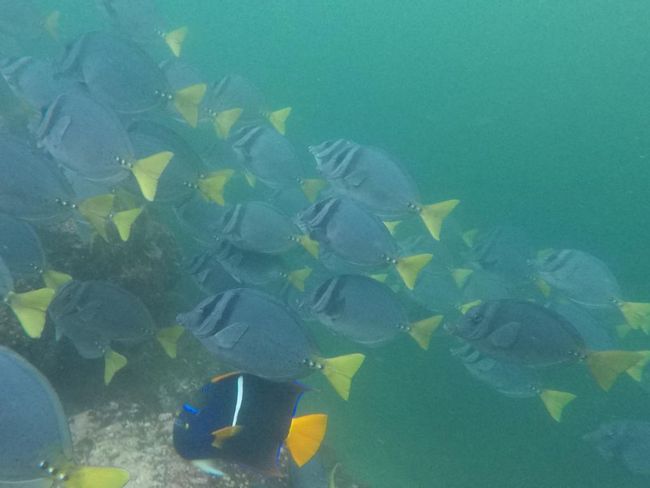
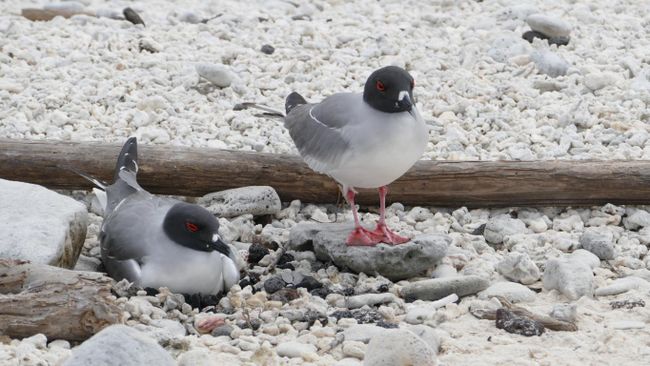
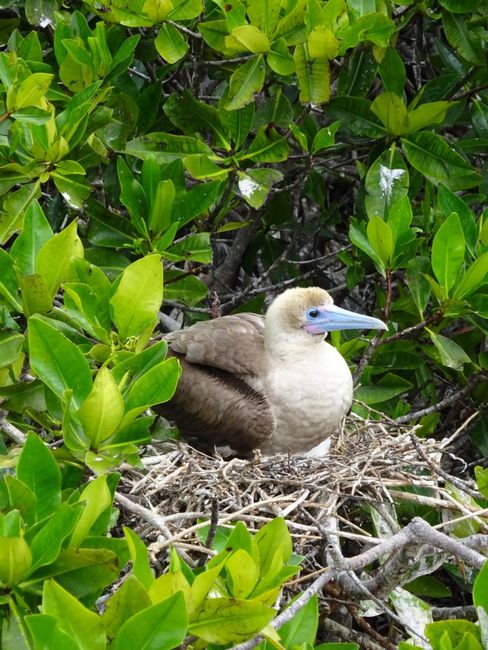
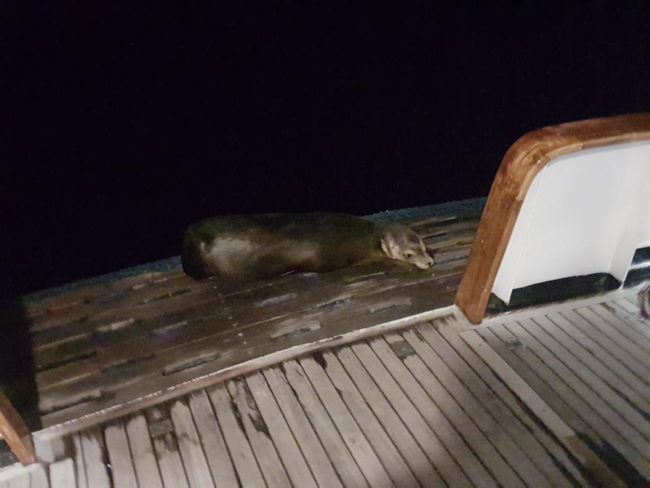
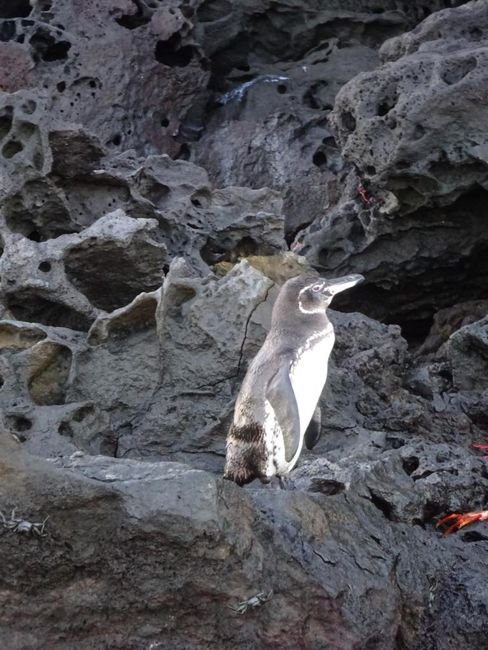
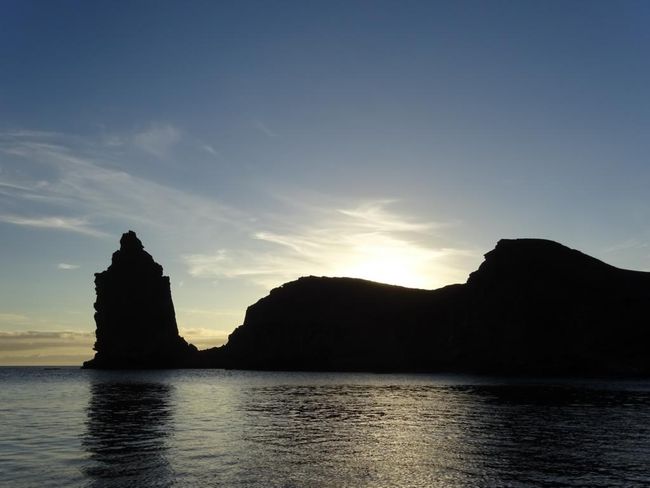
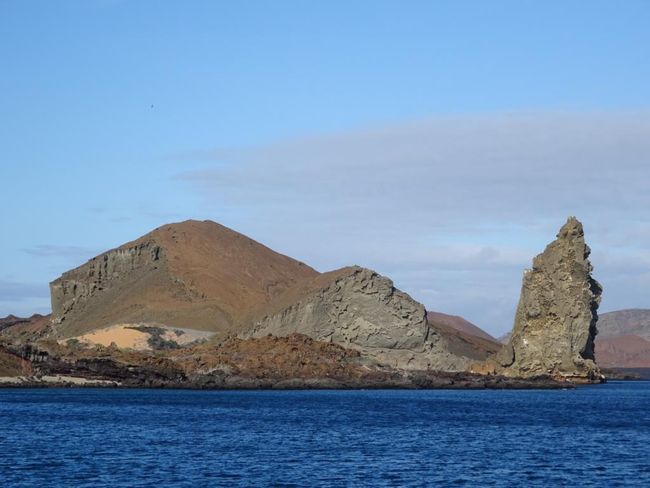
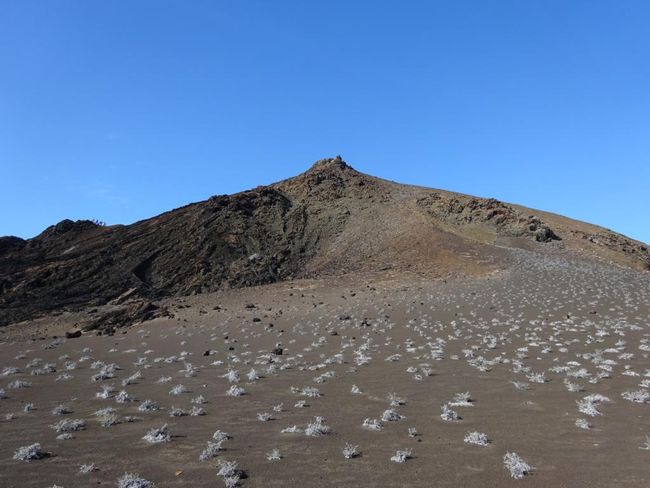
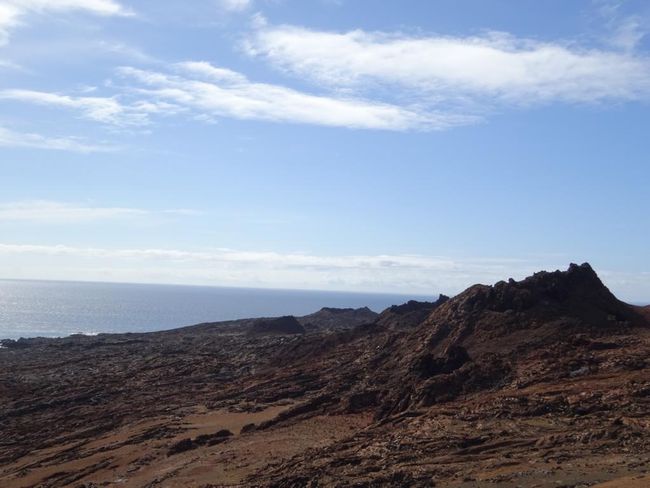
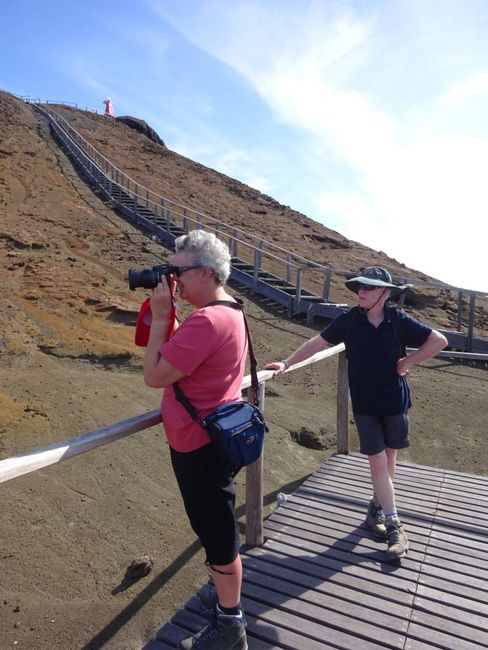
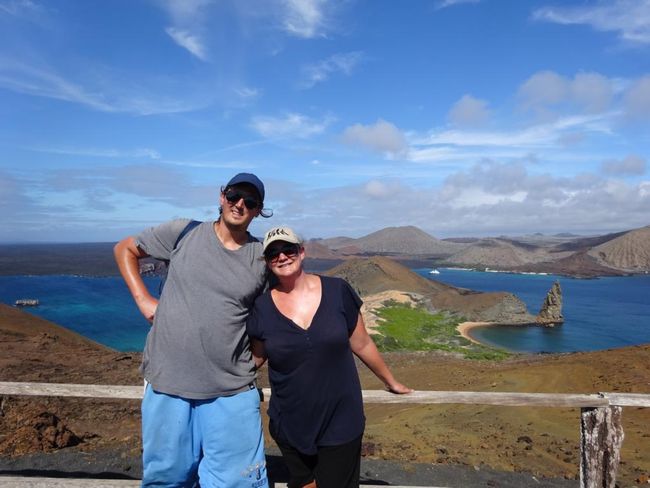
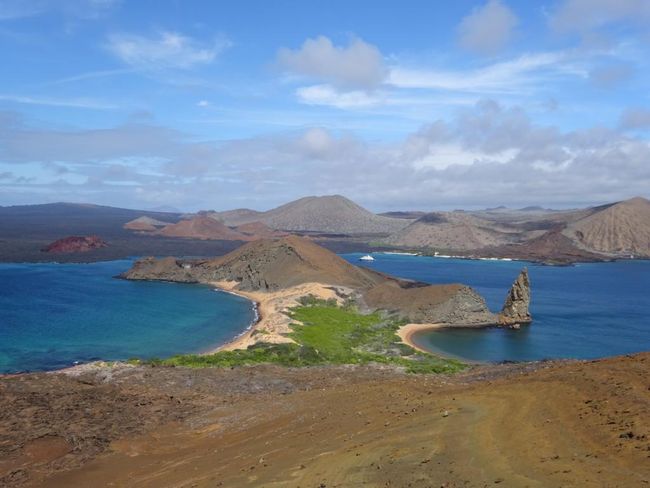
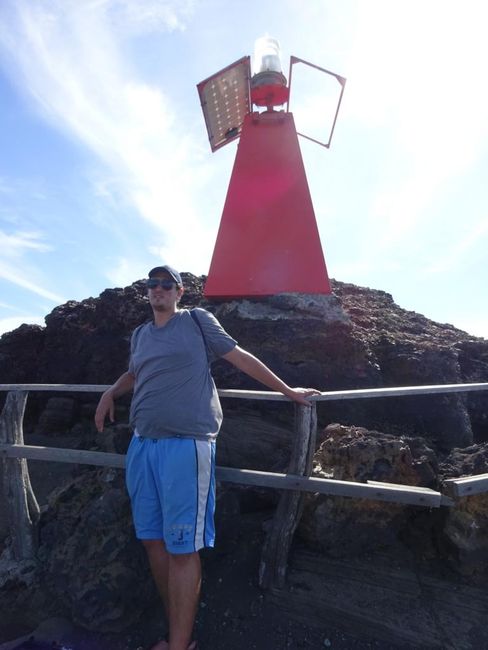
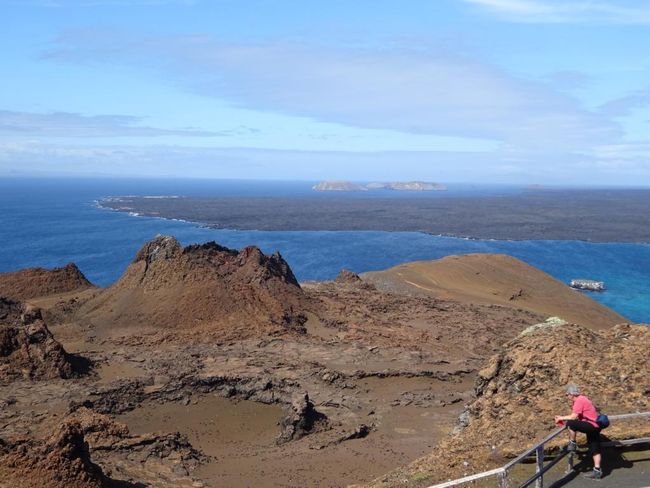
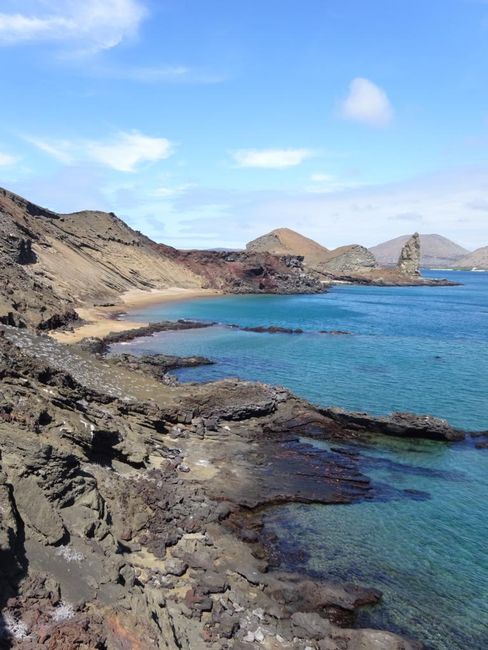
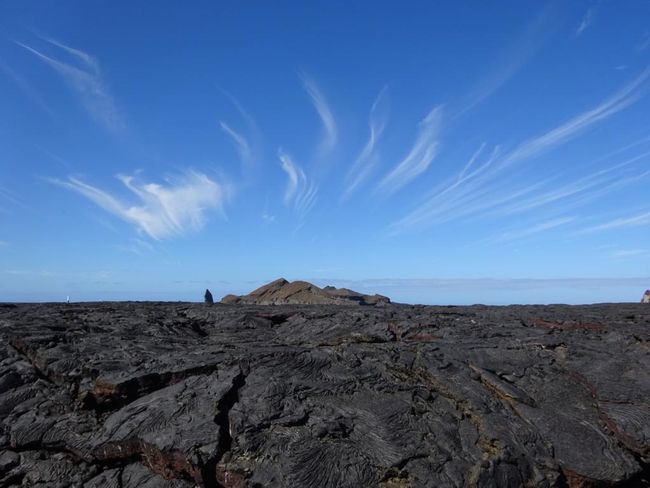
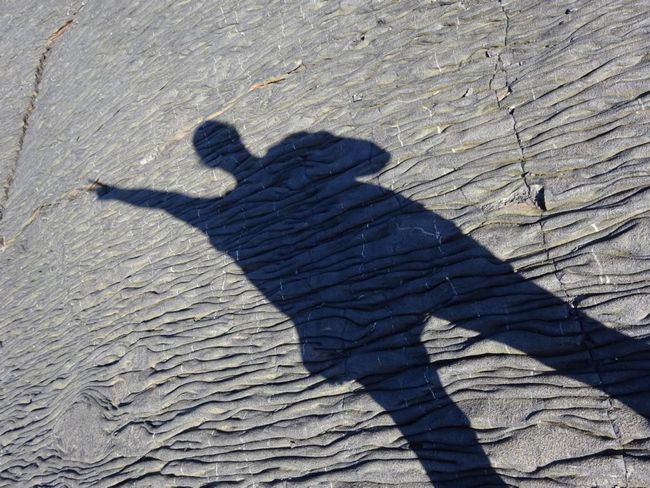
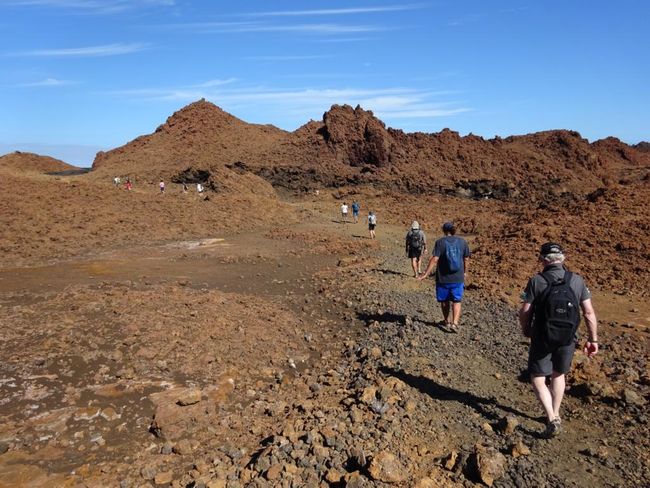
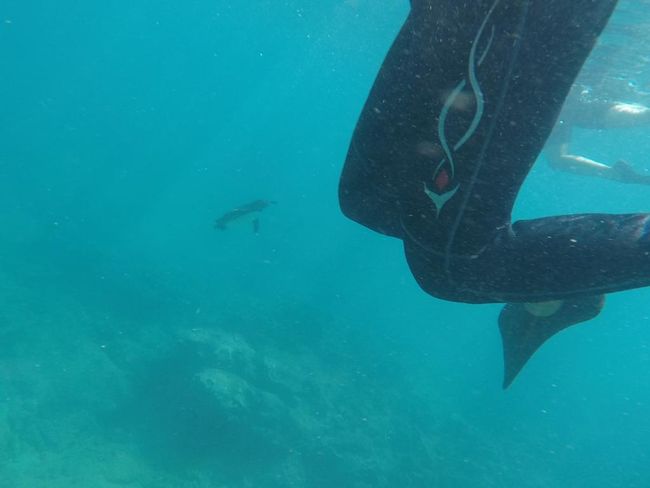
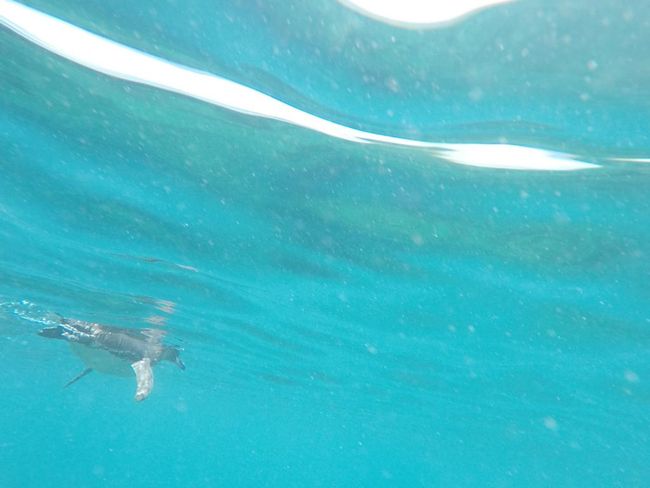
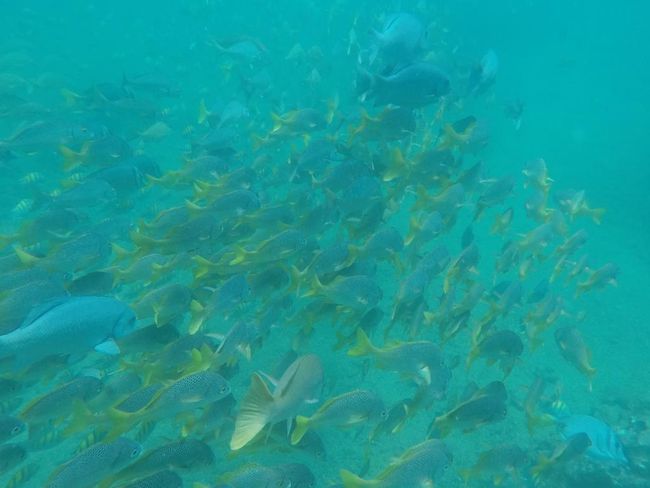
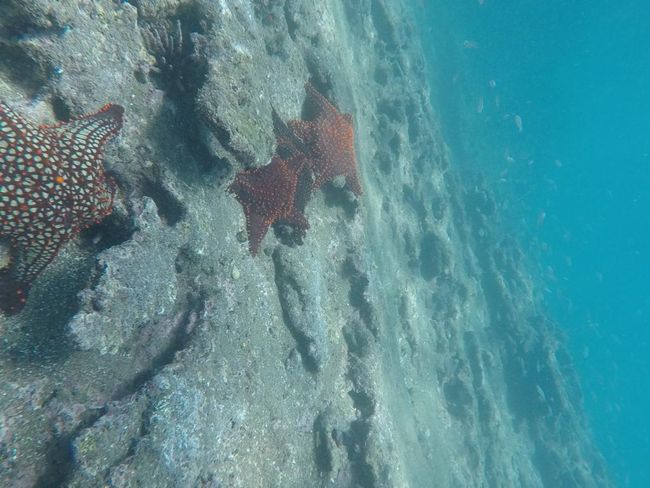
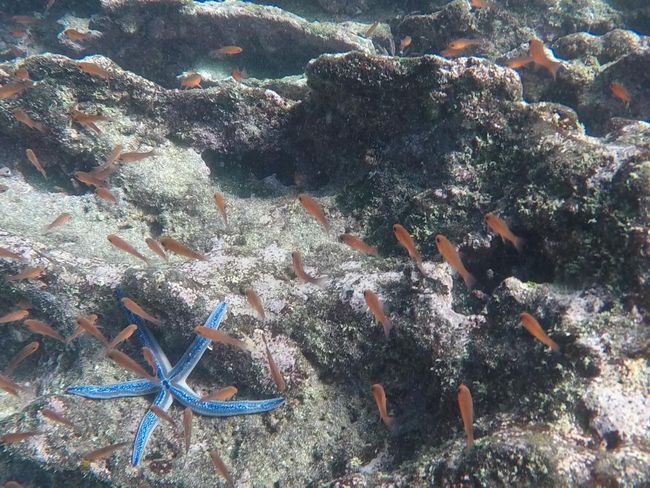
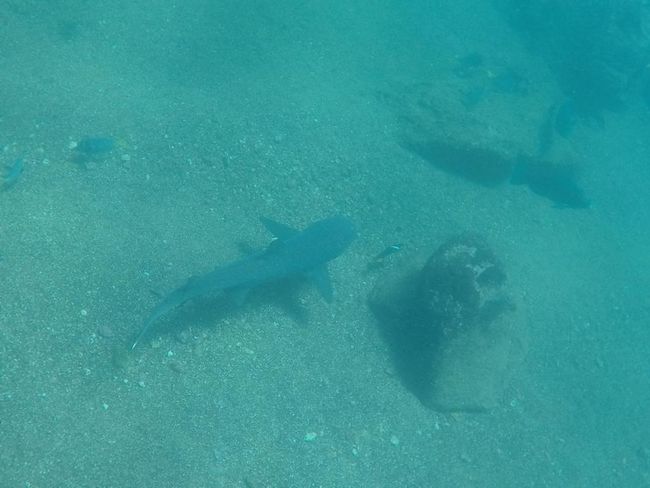
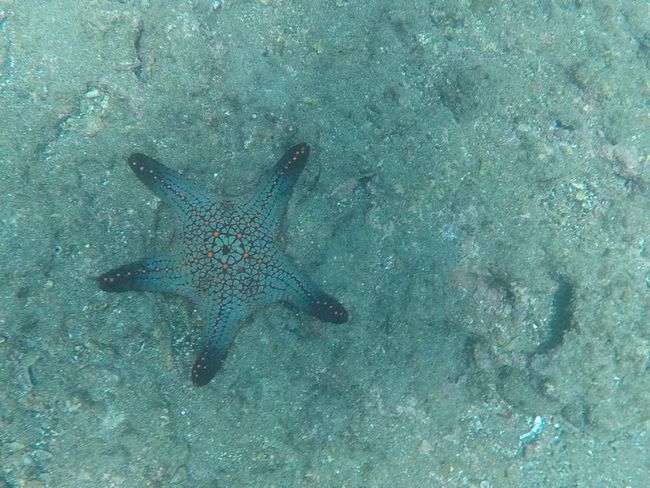
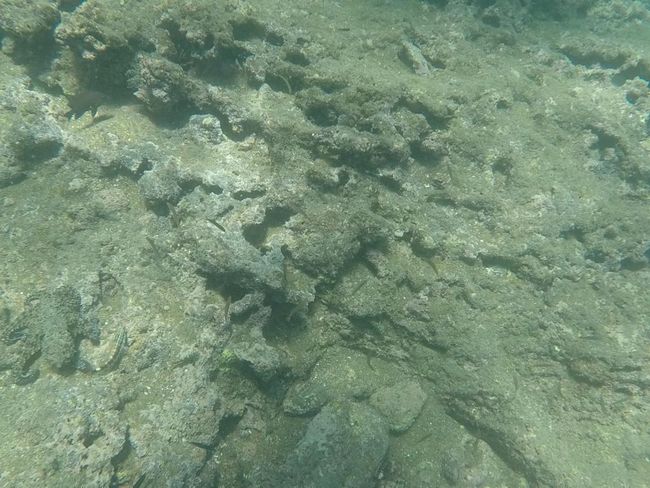
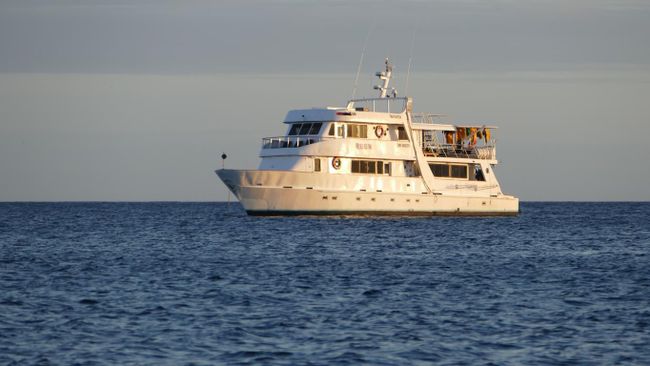
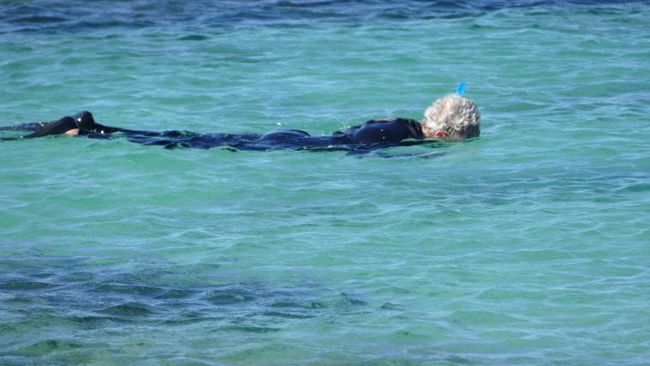
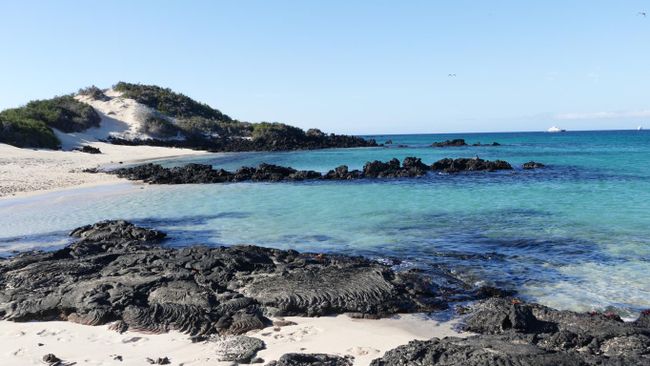
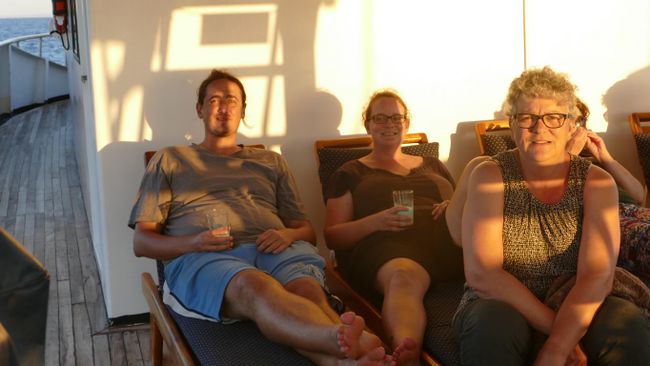
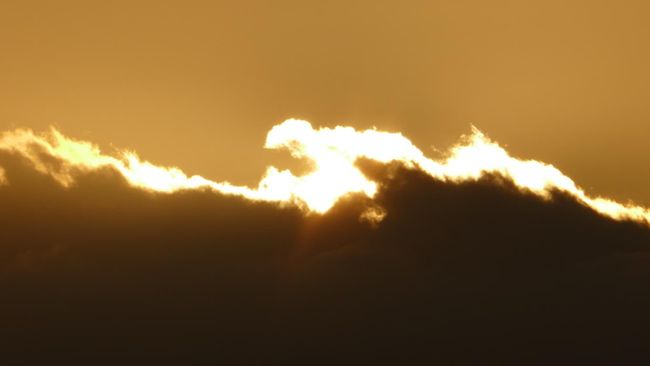
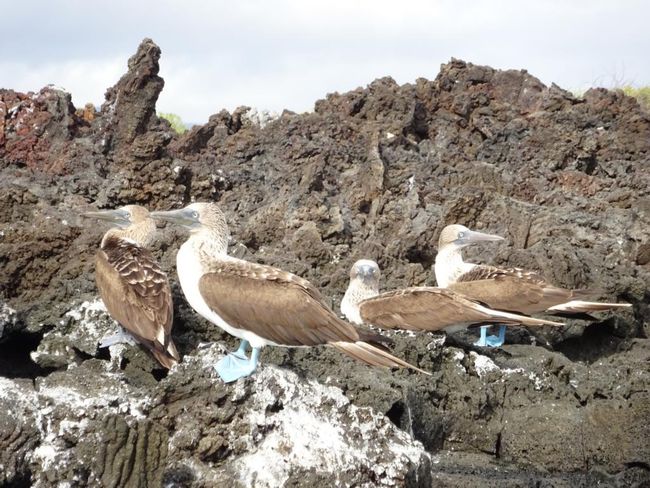
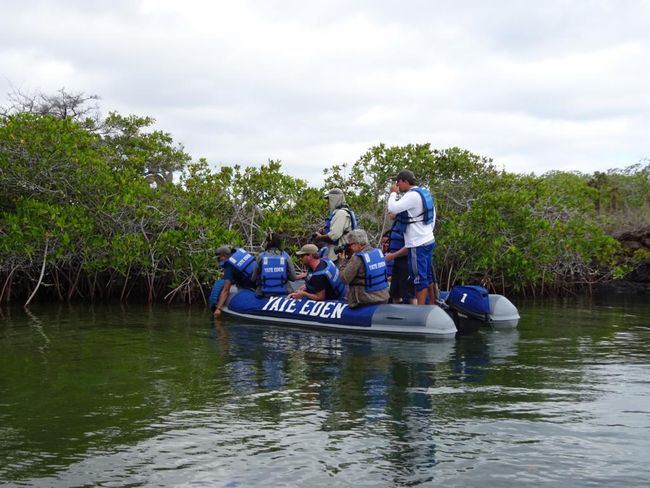
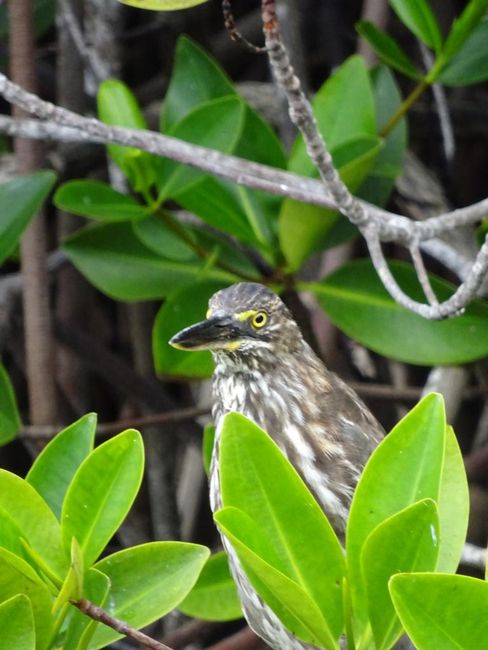
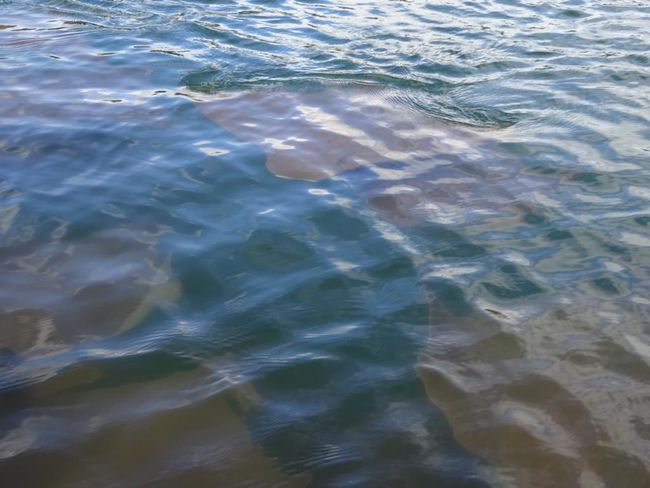
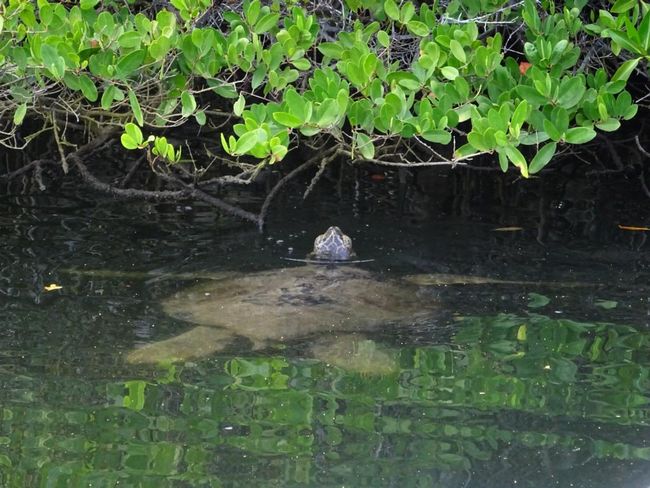
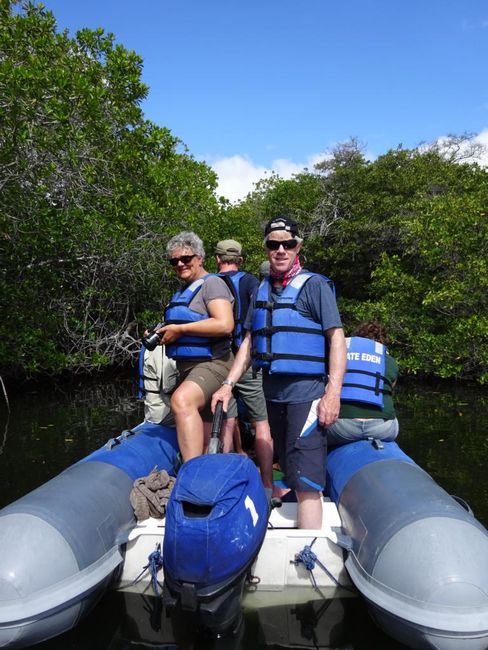
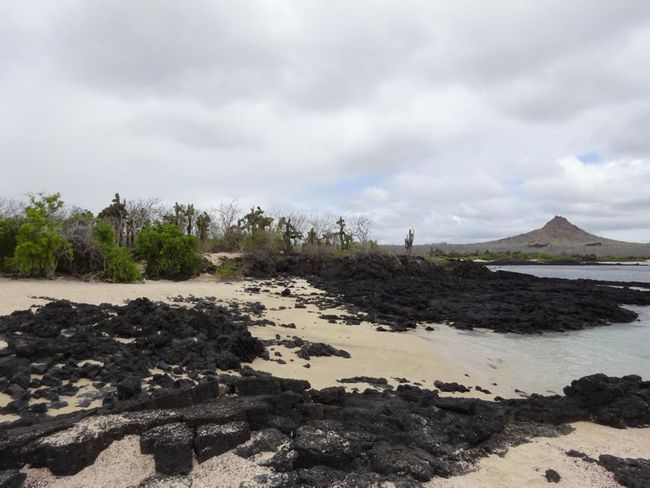
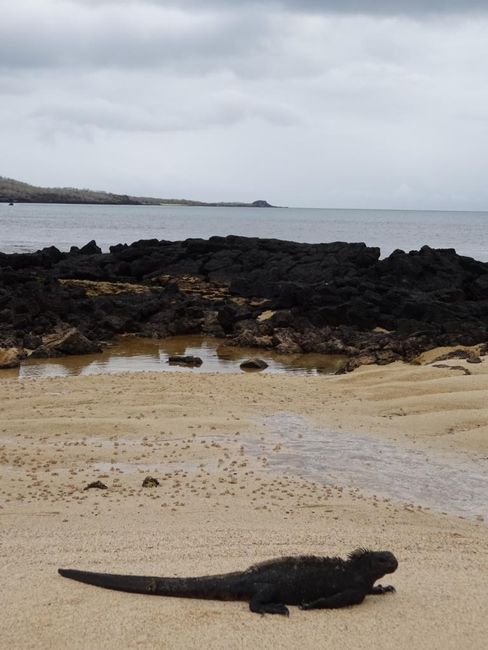
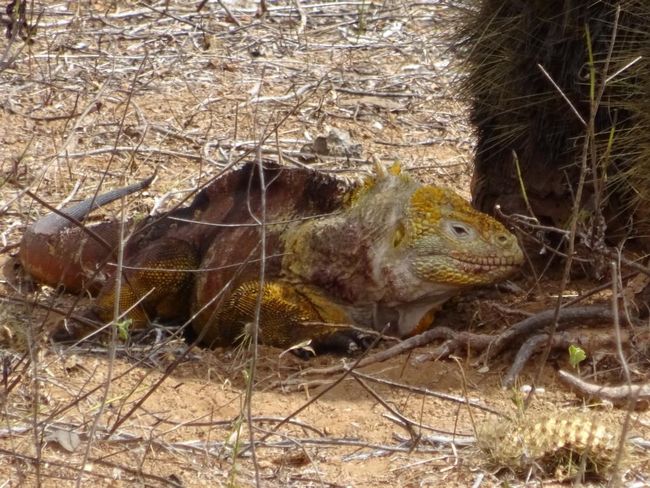
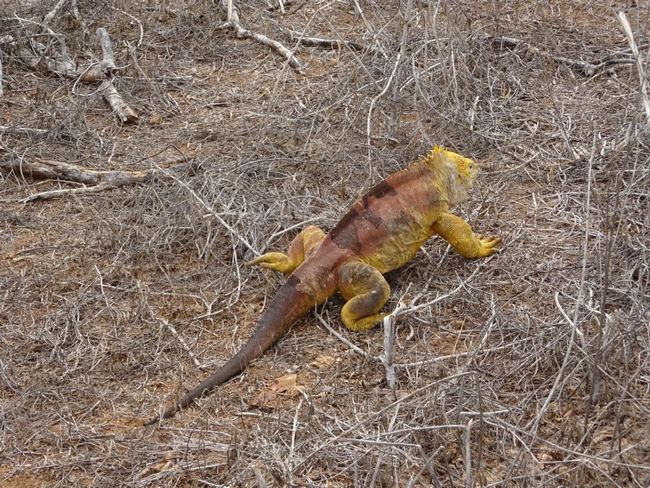
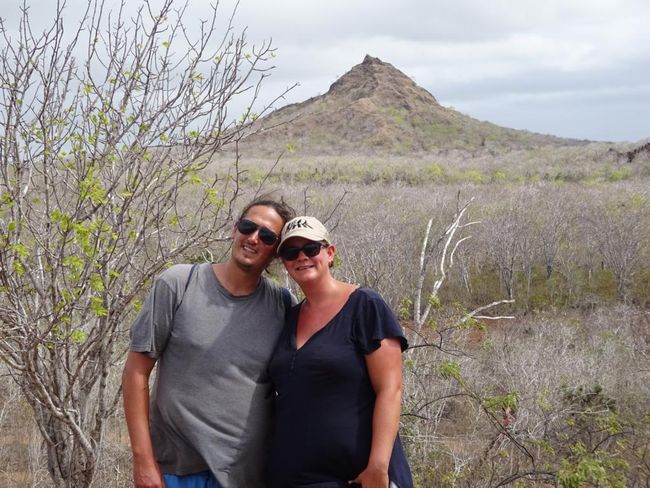
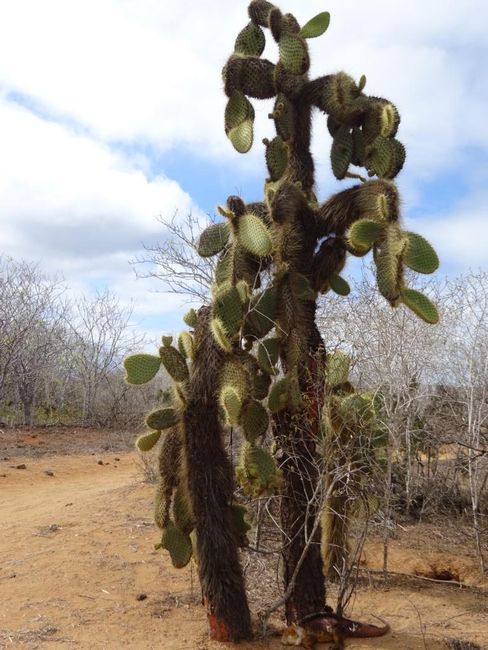
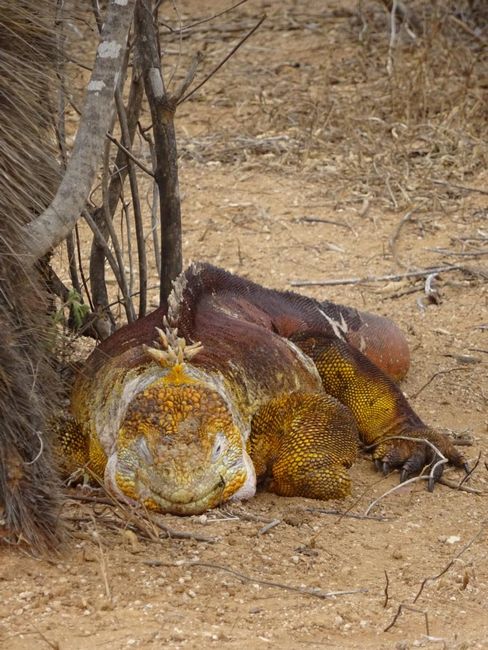
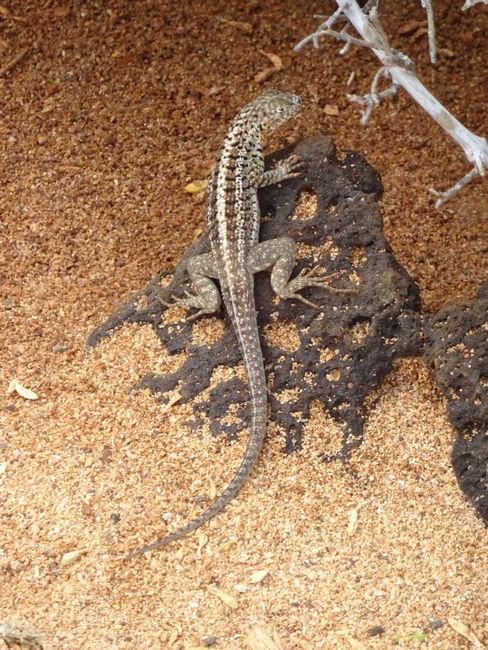
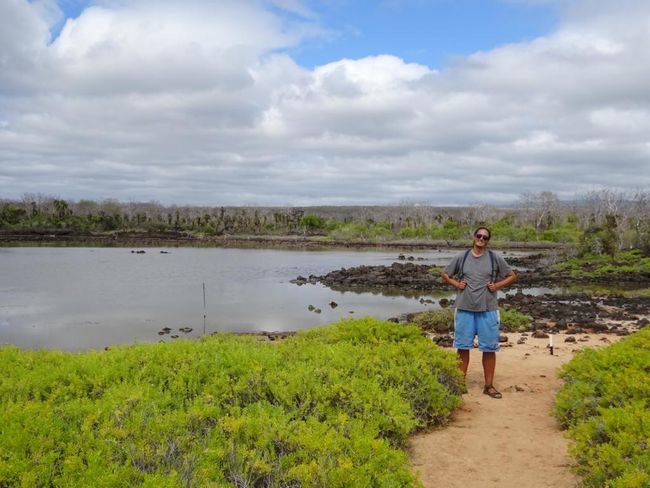
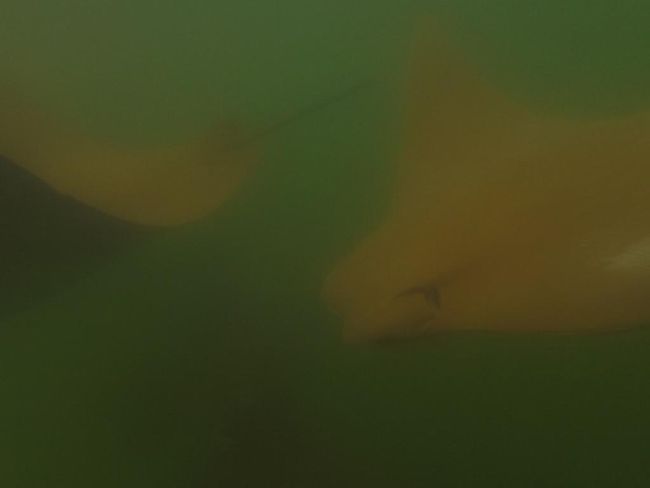
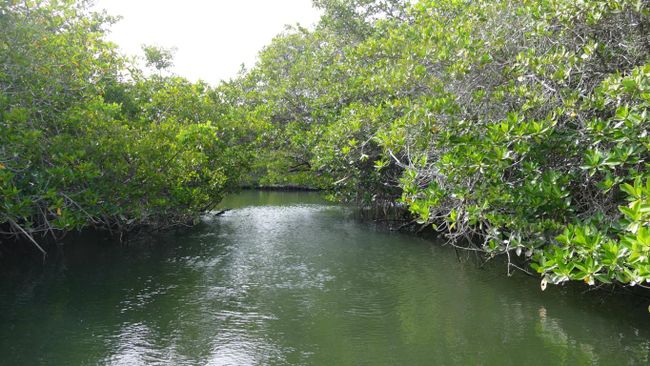
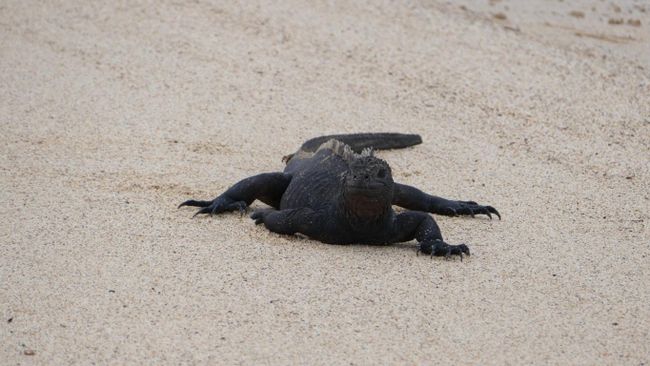
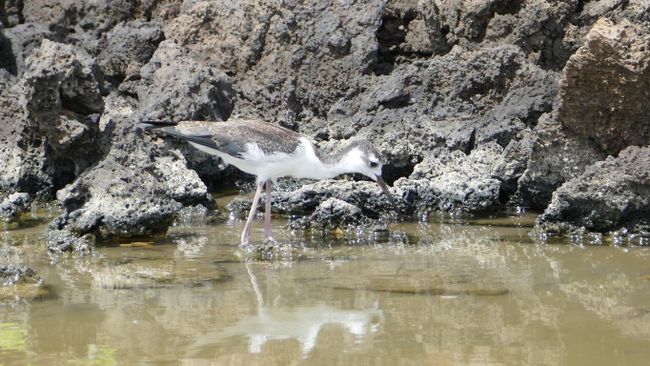
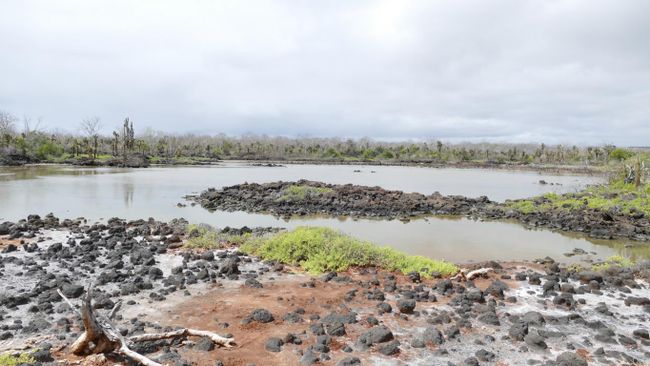
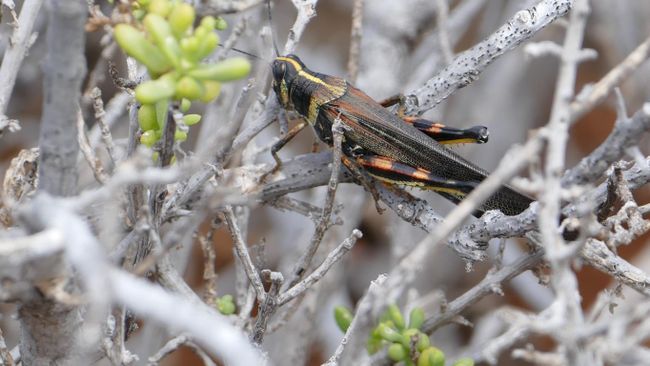
Liostáil le Nuachtlitir
Endlich war es soweit, der Tag war gekommen, an dem unsere 7-tägige Kreuzfahrt um die Galapagos Inseln starten würde. Dummerweise starten die Kreuzfahrtschiffe nicht in Puerto Ayora, sondern am Kanal in der Nähe des Flughafens, so dass wir den ganzen Weg zurück zur Insel Baltra fahren mussten, um am Flughafen unseren Guide und unsere übrigen «Gspändli» für die nächste Woche zu treffen.
Gesagt getan, und nachdem endlich alle Flüge angekommen und wir alle beisammen waren, machten wir uns auf den Weg zum Hafen. Dort wurden wir mit kleinen Schlauchbooten abgeholt und betraten kurz darauf zum ersten Mal die «Eden». Die kleine Yacht bietet Platz für 16 Passagiere und die Crew und ist wirklich hübsch. Hier liess es sich gut eine Woche aushalten. Das Schiff verfügte über 2 Kabinen im oberen Deck mit Stockbetten, 2 Kabinen im Hauptdeck mit Doppelbetten (wovon eine interessanterweise vom Guide belegt wurde), sowie 4 Kabinen mit je zwei Einzelbetten im Unterdeck. Wir hatten die Kabinen im Unterdeck gebucht. Der Nachteil war, dass man sich dort nahe des Motorenraums befand und es daher etwas lauter war. Der Vorteil war, dass es die grössten Kabinen waren, und es im unteren Teil des Schiffs weniger schaukelt. Ausserdem gab es auf dem Hauptdeck den Aufenthalts- und Essbereich mit einer kleinen Bar und auf dem Oberdeck einen weiteren Aufenthaltsbereich, wo einige Liegestühle bereitstanden.
Mit uns in der Gruppe waren Robyn und Darien ein Ehepaar aus Australien, Dhara und Ushan ein junges Paar aus Neuseeland bzw. Sri Lanka, Anouk und Sander ein Paar aus Holland, und Magdalena und Barbara Mutter und Tochter aus Deutschland, sowie ein älteres Paar aus Dänemark. Später stiessen noch Coby und Paul hinzu, ebenfalls ein Paar aus Holland. Wie üblich bei solchen Gruppenausflügen bzw. -reisen brach das Eis ziemlich schnell, die anfänglich zurückhaltende und etwas kühle Atmosphäre taute auf, man kam miteinander ins Gespräch und es dauerte nicht lange, bis sich die Gruppe zusammengefunden und man viel Spass miteinander hatte.
Nachdem alle an Board ihre Zimmer bezogen hatten, gab es auch schon das erste Mittagessen, während die Eden den Hafen verliess und den ersten Ankerplatz ansteuerte.
Tag 1 Nachmittag
Isla Santa Cruz: Las Bachas Beach
Nach dem Mittagessen gab es zunächst einmal das erste Briefing, bei dem die SChnorchelausrüstung ausgeteilt, verschiedene wichtige Informationen und Sicherheitshinweise kommuniziert und das Programm des Nachmittags erklärt wurde. Unser erster Stopp war bei las Lachas Beach auf der Hauptinsel Santa Cruz. Dort gab es zum ersten Mal ein «Wet Landing», dh. Man wurde mit den Schlauchbooten zum Strand gefahren und musste dort an Land gehen, indem man ins knöchelhohe Wasser stieg.
Die Rundgänge an den verschiedenen Landungspunkten sind genau vorgegeben, man darf also nur dem gekennzeichneten Weg folgen und keineswegs einfach frei auf der Insel umherlaufen. Dies in erster Linie, um die Tiere nicht zu stören und deren Brutplätze nicht zu gefährden. Boote dürfen auch nicht einfach frei zwischen den Inseln umherfahren. Die Kreuzfahrtgesellschaften müssen ihre Zeitpläne von der zentralen Verwaltung des Nationalparks prüfen und absegnen lassen. Auch wenn man als Privatperson mit eigenem Segelschiff anreisen würde, müsste man vorher genau angeben, wann man wo durch fahren und wo man ankern würde. Es dürfen nur eine bestimmte Anzahl von Schiffen zur gleichen Zeit an einer Landungsstelle ankern und auch die Anzahl Personen, die zeitgleich an einem Ort an Land gehen dürfen, ist begrenzt.
Las Bachas Beach war erstmal wenig spektakulär. Wir trafen auf einige Marine Iguanas und besuchten eine Lagune, wo es Flamingos geben sollte. Es waren allerdings nur wenige da. Der Strand dient ausserdem als Nistplatz für Meeresschildkröten. Die Nester erkennt man allerdings nur als kleine Gruben im Sand, worin die Mutter-Schildkröte ihre Eier ablegt, bevor sie wieder ins Meer zurückkehrt. Die kleinen Schildkröten suchen ebenfalls das Weite im Wasser, sobald sie geschlüpft sind, allerdings schafft es nur ein kleiner Bruchteil aller Jungtiere zurück ins Meer, der Rest endet bereits auf den wenigen Metern unterwegs als Futter für andere Tiere.
Nach dem Rundgang konnten wir zum ersten Mal vom Strand aus Schnorcheln. Dieser erste Schnorchelgang diente vor allem etwas zum Üben für die Unerfahrenen in der Gruppe, zu sehen gab es ausser Sand, ein paar Felsen und ein paar farbigen Fischen gar nichts.
Überall auf den Galapgagos Inseln sieht man übrigens diese roten Krabben entlang der Felsen. Unser Guide erklärte uns, dass es seit 5 Jahren verboten sei, diese Krabben zu essen, deswegen gäbe es nun so viele davon.
Nachdem wir wieder an Bord zurückgekehrt waren, gab es schon bald das Abendessen. Das Essen an Bord war generell wirklich ausgezeichnet und abwechslungsreich, auch auf Sonderwünsche, Allergien und Spezialdiäten wurde konsequent geachtet. Darunter hatte vor allem Othmar zu leiden. Wie von Manuela aufgetragen, übermittelte ich mit den Essenswünschen an die Agentur, dass Othmar keine Milch trinken sollte. Ich war ja schliesslich nur der Organisator und konnte letztendlich nichts dafür, dass der arme Othmar von nun an dauernd, angefangen beim Willkommenscocktail bis hin zu Zvieri, Frühstück und Desserts, ein Sondermenü vorgesetzt bekam, obwohl es wohl mit der Milch-Abstinenz nicht ganz so streng zu nehmen gewesen wäre. Die Crew hat sich wirklich wahnsinnig Mühe gegeben, diesen Anforderungen gerecht zu werden, und wir anderen haben uns zum Leidwesen Othmars köstlich amüsiert.
Meistens gab es zu den Mahlzeiten ein kleines Buffet, wo man sich selbst bedienen konnte. Der Koch wurde allseits stets gelobt und er war es wohl auch, der am Ende der Woche das meiste Trinkgeld einheimste (wohlverdient).
Täglich gab es ausserdem ein Briefing, wo das Programm des nächsten Tages vorgestellt wurde.
Abends gingen alle jeweils sehr früh ins Bett. Zum einen, weil man nach den Ausflügen und Schnorcheltouren abends wirklich völlig erschöpft war. Zum anderen, weil wir viele lange Passagen auf offener See während der Nacht fuhren, so dass jedermann versuchte, bereits zu schlafen, bevor das schlimmste Geschaukel anfing.
Gleich in der ersten Nacht fuhren wir 7h zur weit nördlich gelegenen Insel Genovesa, und der Wellengang war tatsächlich beträchtlich, so dass es auch mir in der Horizontalen definitiv am wohlsten war.
Tag 2 Isla Genovesa
Die kleine Isla Genovesa ist eine der nördlichen Inseln vom Galapagos-Archipel und wird nicht von allzu vielen Touren angesteuert. Genau das macht aber auch ihren Reiz aus. Um dorthin zu gelangen, muss man ausserdem den Äquator überqueren, da sie in der nördlichen Hemisphäre liegt.
Am Vormittag gingen wir bei Darwins Bay an Land, wo reger Betrieb herrschte. Der Ort wimmelte nur so von Nistplätzen verschiedenster Vögel. Zunächst einmal trafen wir auf Galapagos Seemöwen. Die Nazca Boobies (Nazca Tölpel) und die Red Footed Boobies (Rot-Fuss-Tölpel) waren entweder noch damit beschäftigt, die Eier in ihren Nestern auszubrüten, oder kümmerten sich schon um ihre bereits geschlüpften Küken. Die Fregattvögel waren noch nicht ganz soweit, die meisten von ihnen waren noch mit der Partnersuche zu Gange. Dazu blähen die Männchen einen roten Hautsack unter dem Kopf auf, um damit auf sich aufmerksam zu machen, und Weibchen anzulocken. Wie uns unser Guide erklärt gruppieren sich dazu interessanterweise vor allem Brüder und Cousins zu Gruppen, um damit die Chance zu erhöhen, die Familiengene weitergeben zu können.
Am Strand faulenzte auch noch eine Seelöwenkolonie.
Nach dem Rundgang konnten wir vom Strand aus schnorcheln. Auch hier war es noch nicht so wahnsinnig spektakulär, jedenfalls nicht für uns, die wir doch schon an einigen Orten geschnorchelt waren. Es gab vor allem viele farbige Fische zu sehen.
Nachmittags ging es erstmal zum Schnorcheln, und zwar entlang einer Klippe. Dabei wurden wir stets von den Schlauchbooten begleitet, die einen unterwegs aufsammelten, wenn man keine Lust mehr hatte, oder müde wurde. Auch dort gab es verschiedene Fische zu sehen, ausserdem ein paar Haie und auch ein Seelöwe zischte einmal kurz an uns vorbei.
Nach dem Schnorcheln ging es eilig zurück an Board, wo wir uns umzogen, denn kurz darauf ging es schon weiter mit dem nachmittäglichen Landgang bei Prince Philip’s Steps. Diesmal handelte es sich um eine «Dry Landing», dh. Man musste sich die Füsse nicht nassmachen, sondern vom Schlauchboot aus auf eine Felsstufe hinüberhüpfen.
An diesem Landungspunkt gab es eine sehr karge und doch faszinierende Vegetation. Auch hier waren unzählige Vögel zu sehen. Als Highlight trafen wir hier die Short Eared Owl, also eine Eule mit offensichtlich kurzen Ohren. Hier konnte Manuela besonderes Geschick im Eulen-Erspähen unter Beweis stellen, sie war es nämlich, die einen der kleinen Kerle in einer Felsspalte entdeckte, den niemand sonst von uns dort je gesehen hätte.
Tag 3: Bartholomew Island & Sullivan Bay Island
Hatte ich schon erwähnt, dass es auf der Kreuzfahrt jeden Tag um 07:00 Uhr Frühstück gab? Also absolut Jörgs und meine Lieblingszeit des Tages! Am dritten Tag wurde dieses Vergnügen sogar noch übertroffen, denn bereits morgens um 06:00 gab es eine Rundfahrt mit den Schlauchbooten zu einer Pinguin Kolonie. Diese Aktivität war natürlich freiwillig, dh. Wir hätten auch getrost im Bett bleiben können…..aber wer will denn schon die Pinguine verpassen? Also quälten wir uns zu früher Stunde aus dem Bett und erfreuten uns zumindest an der Tatsache, dass man wenigstens nur im Panga (Schlauchboot) hocken und keine langen Fussmärsche unternehmen musste. Tatsächlich sahen wir einige Pinguine, die auf Felsen standen oder zwischen Felsen hin und her schwammen. Die kleinen Biester vernünftig zu fotografieren war allerdings ein schwieriges Unterfangen.
Nach dem Frühstück ging es dann wieder an Land, wo wir den Gipfel von Bartholomew Island erklommen. Der Gipfel war zugegebenermassen nicht wahnsinnig hoch, und entlang des Weges verlief ein Holzsteg mit Stufen, war also nicht allzu schwer zu meistern. Trotzdem machte einem hier die Hitze und die pralle Sonne wahnsinnig zu schaffen, Schatten gibt es nämlich nicht. Auf der Insel gibt es nämlich (noch) kaum Vegetation, erst ein paar wenige Pflänzchen, die in der trockenen Umgebung überleben können, haben sich hier angesiedelt. Vom Gipfel hat man eine umwerfende Aussicht auf die umliegenden Inseln und den Pinnacle Rock, eines der meistfotografierten Sujets auf Galapagos.
Vor dem Mittagessen fuhren wir mit der Eden bereits das nächste Ziel an, Sullivan Bay Island, wo wir am Nachmittag an Land gehen würden. Der Landgang auf Sullivan Bay war etwas ganz Besonderes. Hier gab es keine Tiere, keine Vegetation, es gab absolut gar nichts (ausser der Sonne, die stetig von oben herab glühte). Man lief nämlich auf einem Lavastrom, der noch relativ jung ist (ca. 170 Jahre). Das Einzige, was es zu sehen gab, waren die absolut faszinierenden Muster, die entstanden sind, während die Lava abgekühlt ist, beispielsweise durch Wind, der über die Landschaft hinwegfegte. Es sieht wirklich so aus, als wäre die Lava erst gestern gerade erst abgekühlt. Vom Lavafeld aus sah man rundherum einige rot gefärbte Hügel, wobei die rote Farbe auf den Eisengehalt im Gestein zurückzuführen ist. Hier hatte man wirklich das Gefühl, auf dem Mond zu wandeln, fernab von dieser Welt.
Nach dem ziemlich anstrengenden Fussmarsch in der prallen Sonne über den Lavastrom konnten wir vom Strand aus schnorcheln. Und prompt gesellte sich ein Pinguin zu uns, bzw. zischte mehrmals in Affentempo an uns vorbei.
Ausserdem sahen wir unter Wasser viele verschieden farbige Seesterne, einige Haie, und sogar einen kleinen Octopus! Dank mir sozusagen, denn ich hatte den kleinen Kerl erspäht. Und dieses Vergnügen blieb auch nur wenigen aus der Gruppe vorbehalten, da die meisten nämlich bereits wieder in die Pangas gestiegen waren, um sich aufzuwärmen. Man muss dazu sagen, dass das Wasser im Galapagos-Archipel wirklich ziemlich kalt ist. Die meisten der Passagiere hatten sich einen Neopren-Anzug gemietet, vernünftigerweise auch ich, hauptsächlich um eine Erkältung zu vermeiden. Nur Jörg und Othmar gehörten zu den harten Kerlen und schwammen nur in der Badehose.
Abends nach dem Abendessen unterhielt ich mich noch lange mit Magdalena aus Deutschland. Während wir gemütlich im hinteren Teil des Schiffs sassen und quatschten, leistete uns sogar noch ein blinder Passagier Gesellschaft: in Seelöwe sass auf der Heck-Planke des Schiffs und «fägnäschtete» dort herum. Wirklich wahnsinnig süss.
Tag 4: Santa Cruz Island
Nach unserem Ausflug in den nördlichen Teil des Archipels kehrten wir zurück, und erkundeten einige weitere Plätze rund um die Insel Santa Cruz, bevor wir nach Süden aufbrechen würden.
Am Vormittag des viertes Tages unternahmen wir eine Fahrt in Panga in der Black Turtle Cove. Hier war es weder erlaubt an Land zu gehen, noch im Wasser zu schwimmen. Dies daher, da es sich hier um einen Ort handelt, wo viele Tiere ihre Jungen zur Welt bringen, insbesondere trafen wir auf sehr viele kleine Baby-Haie, die man gut vom Schlauchboot aus sichten konnte. Rund um die Bucht gibt es sehr viele verschiedene Mangroven-Arten (rote, weisse und schwarze Mangroven). Ausserdem trafen wir hier auf eine Unmenge an Schildkröten, die man immer wieder erspähen konnte, sobald sie das Köpfchen aus dem Wasser hielten, um Luft zu holen. Es ist beinahe unheimlich, wie lange Schildkröten die Luft anhalten können, dies haben wir vor allem auch bei Begegnungen während Schnorcheltouren mehrmals beobachten können. Ein absolutes Highlight war der Schwarm von goldenen Rochen, die mehrmals neben und unter unseren Booten nahe an der Wasseroberfläche vorbeizogen. Obwohl man die Tiere auch aus dem Boot einigermassen gut sehen konnte, wäre man hier trotzdem gerne ins Wasser gesprungen, um die Tiere unter Wasser beobachten zu können. Aber leider blieb uns nichts anderes übrig, als unsere GoPro ins Wasser zu halten und auf ein paar Gute Schnappschüsse zu hoffen. Des Weiteren waren auch die üblichen Verdächtigen an Vögeln zugegen: Blaufusstölpel, Pelikane und noch einige weitere Kleinvögel.
Nachmittags gingen wir bei Dragon Hill an Land, wo wir gelbe Land-Echsen beobachten konnten. Auf den Galapagosinseln gibt es sogar noch pinke Iguanas, aber diese leben leider an einem Ort, der nicht betreten werden darf. Auch hier wanderten wir wieder durch eine sehr karge Landschaft rund um einen Hügel, wo ausser den grossen gelben Iguanas nur noch kleine Eidechsen leben.
Da die nächste Schiffspassage in ruhigerem Gewässer entlang Santa Cruz zwischen den grossen Hauptinseln stattfand, konnten wir uns abends endlich mal einen Drink von der Bar gönnen, ohne befürchten zu müssen, anschliessend den Kopf über die Reling hängen lassen zu müssen. Also bestellten wir uns passend zum Anlass einen «Blue Footed Booby», und der war wirklich sehr lecker. Natürlich haben wir das Rezept gleich gekrallt, um es dann auf unsere eigene Cocktailkarte zu setzen, wenn wir dann mal wieder ein Zuhause haben.
Liostáil le Nuachtlitir
Freagra
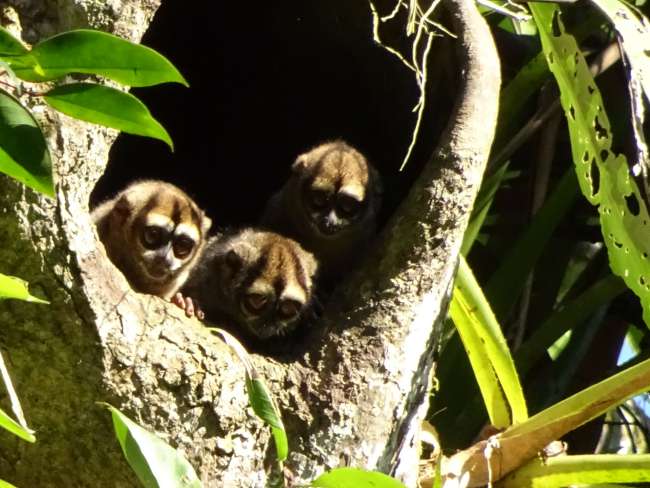
Tuairiscí taistil Eacuadór

